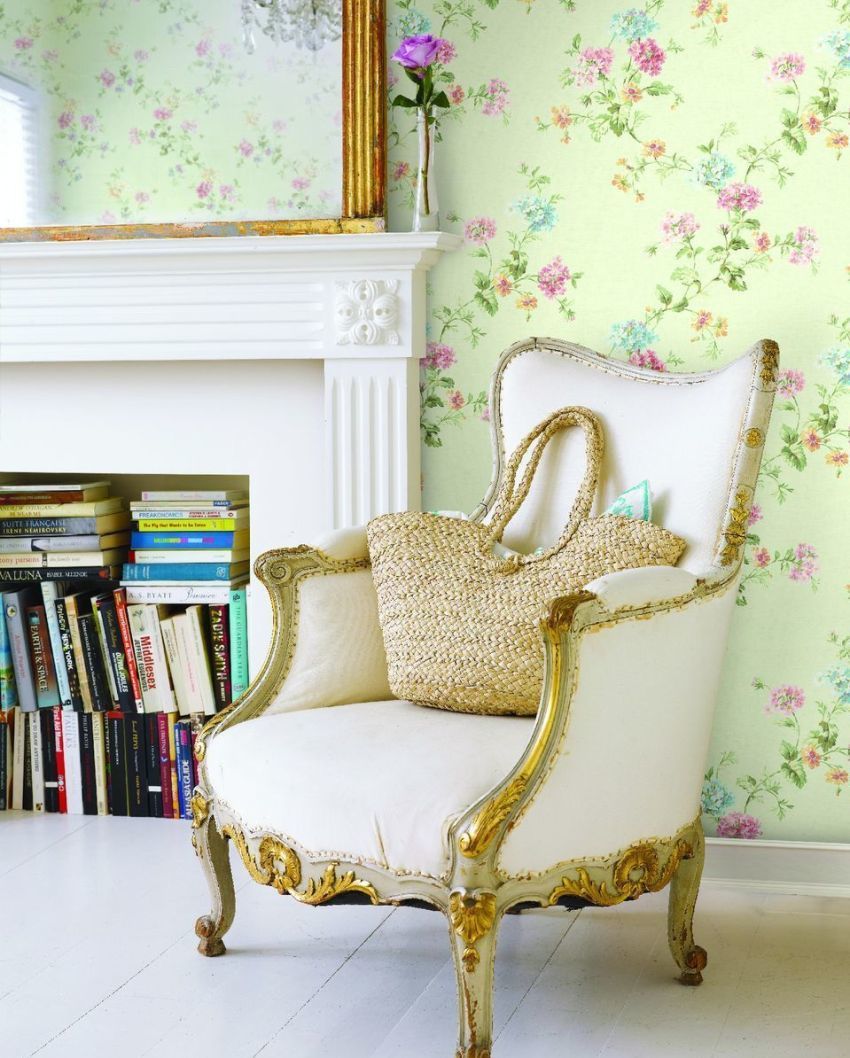Contents of
- 1 What is molding?
- 2 Mounting
- 3 Scope of application
- 4 What are moldings?
When deciding on the finish of walls and ceilings, the standard formula is often used - coating with one material. This option has the right to exist. The room looks harmonious, and all the details of the interior are very easily combined. But sometimes you want, what be raisin, which would also fit into the interior, but it did not spoil the aesthetics. In this case, you can pay attention to moldings.
What is molding?
Molding, is a decorative material. It has the form of a three-dimensional bar that fits on the surface. The length of the bar is standard and does not exceed 240 cm. Width, design, profile - all this can have different parameters. You can use very flat moldings, or resort to decorating the room with bulky slats. Very beautiful look models with different decorative elements and complex texture. But such moldings should be properly compared with the general concept of interior design.
The decor element can be made of various materials. The most popular are plastic, polyurethane, polystyrene. For flexibility, they are also very different. Can be elastic or very solid. The former are much more expensive, therefore, they are used only when necessary, when it is not possible to work hard on this section of the wall.
The most expensive moldings from PVC or gypsum are considered, and the first place in this respect is occupied by marble slats. The use of such models is characteristic in those cases when the designer's task is to design a room in an aristocratic or classical style.

Kinds of molding
Mounting
Mounting the strips is quite simple. In order to finish the walls with molding was done correctly, it is necessary to pre-prepare the surface and primer. The slats sit on the back of the glue. It has a completely flat surface, so it should fit tightly to the plane you are going to decorate. If the slats have a complex pattern, then before gluing it is necessary to make the markings on the wall. The main thing is to choose the right guides. You can do this with a level and a pencil. It is important to remember that the moldings are attached to the plaster and the painting of the walls. An exception may be the case when the surface finish will be performed by wallpaper. In order not to stain the wallpaper, painting and processing of the laths must be done before gluing.

Scope of application
In modern conditions, white doors are the latest squeak of fashion. In order to mount the door leaf often use trim. As a rule, they must be ordered in a special workshop. And this is a waste of time. You can replace them with moldings. Ideally, the composition will look, if the room is also laid white skirting.
Very often, the finishing of walls with molding solves more serious problems than just decorating. For example, by installing laths around the perimeter of the window, you can visually enlarge the window opening. Light, of course, it does not add, but here the question with visual expansion of space will be solved.
This material often imitates panels. This variant of wall finishing looks very nice when several types of coatings are used in the room. It's very simple to do this, it's enough to cover joints with bright moldings. But the result is really amazing.
The most traditional way is to finish the walls with moldings by gluing the slats over the entire surface area. To do this, use standard, rectangular slats, which sit on the glue. If you can not find the color of the decoration itself in the tone of the wall, you can paint it.
If you like the classic, curved sections will be for you the most optimal solution. With the help of such laths, you can create a unique interior in the style of 60-90 x.
What are moldings?
The slats, in addition to the fabrication material, also vary in shape. Of the most popular can be identified:
- Cornice - the finishing of walls with moldings of this type is to mask the eaves or the aluminum profile of the window frame. Such models have a simple and unpretentious form, without a decorated plaque, sometimes you can find a molding-cornice with a pattern applied;
- Plinth - these elements have the form of a standard bar with a rounded section or in the form of a semicircle. Moldings of this type are used to decorate the joint between the wall and the ceiling surface;
- Baguettes - differ rich in texture. They are best suited for framing frames that surround various decor elements( paintings, figurines, flowers, etc.);
- Compositions - the finishing of walls with moldings can be performed with the help of ready-made compositions. Planks in this case are supplied in the form of a ready solution, for example: an arch, a flower socket, a column, stucco molding, etc.
Each of the molding types described above has a self-adhesive base, which greatly simplifies the installation process. To install, you only need to perform the markup and prepare the surface to be treated. Exceptions are wooden, plaster and marble counterparts. Their installation is complex and requires certain skills, as well as the use of additional building components.


